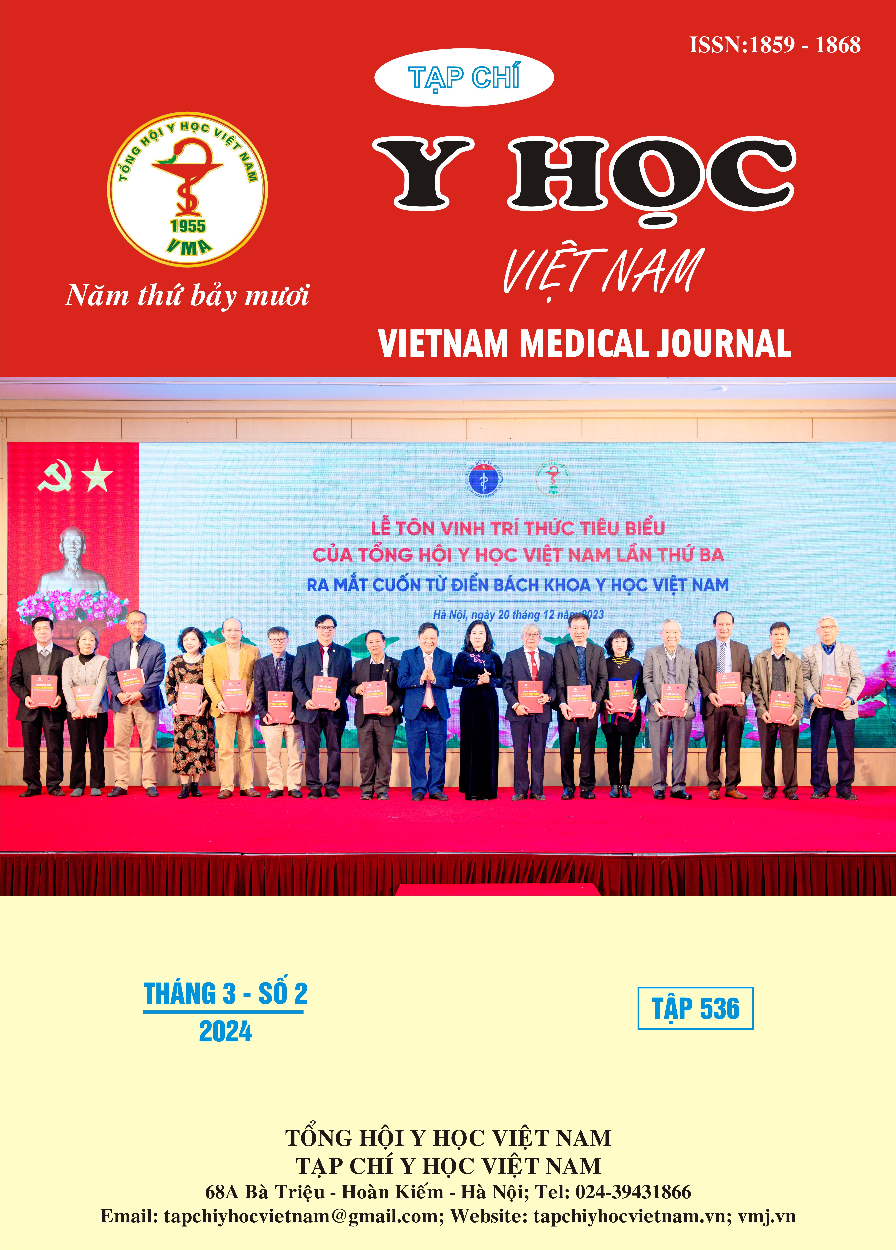THE CHARACTERISTICS OF ULTRASOUND IMAGES AND MAGNETIC RESONANCE IMAGING IN LUMBAR FACET OSTEOARTHRITIS PATIENTS TREATED AT THAI NGUYEN NATIONAL HOSPITAL
Main Article Content
Abstract
Objectives: Describing the images of facet joints on magnetic resonance imaging and ultrasound in the lumbar facet osteoarthritis patients treated at the Rheumatology Department, Thai Nguyen National Hospital. Subjects and methods: Cross-sectional description of 88 patients diagnosed lumbar facet osteoarthritis at The Department, Thai Nguyen National Hospital during the period from July 2022 to July 2023. Results: Male 37(42.0%), female 51(58.0%). The oldest is 93 years old, the youngest is 30 years old. The average age of the patients is 68± 13.02 years old, 79.5% patients are over 60 years old. The average duration of the disease is 65.2 ± 52.2 months, the most recent is 1 month, the longest is 120 months. The most common location for facet joint osteoarthritis is L4-L5 (75.0% MRI, 80% Ultrasound), facet joint L3-L4 (67.0% MRI, 31.8% Ultrasound). On MRI, grade 2 facet joint lesions account for at most 50%. Grade 1 and grade 3 injuries are 25%; Joint fluid images have the highest rate of 73.9%, bone spurs 63.3%, joint space narrowing 61.4%, bone edema 60.2%. On ultrasound, only joint fluid was detected in 52.3% and bone spurs in 47.7%. 100% of facet joint inflammatory lesions detected on MRI were detected on ultrasound at a rate of 92.0%. Conclusion: Lumbar facet joint arthritis occurs mainly in women, the frequency increases with age. The common location for facet joint inflammation is L4-L5. Level 2 injuries account for 50%. Common lesions are joint fluid, bone spurs, and joint space narrowing. MRI has higher sensitivity and specificity than ultrasound in diagnosing facet joint inflammation.
Article Details
References
2. Nguyễn Thị Thoa; (2016), Nghiên cứu đặc điểm lâm sàng và xquang thường quy của thoái hóa khớp liên mấu cột sống thắt lưng, Luận văn Thạc sỹ Y học, Trường Đại học Y Hà Nội, Hà Nội.
3. S. P. Cohen và S. N. Raja (2007), "Pathogenesis, diagnosis, and treatment of lumbar zygapophysial (facet) joint pain", Anesthesiology. 106(3), pp. 591-614.
4. S. P. Cohen and al. (2008), "Lumbar zygapophysial (facet) joint radiofrequency denervation success as a function of pain relief during diagnostic medial branch blocks: a multicenter analysis", Spine J. 8(3), pp. 498-504.
5. L. Kalichman and al. (2008), "Facet joint osteoarthritis and low back pain in the community-based population", Spine (Phila Pa 1976). 33(23), pp. 2560-5.
6. L. Linov and al. (2013), "Lumbar facet joint orientation and osteoarthritis: a cross-sectional study", J Back Musculoskelet Rehabil. 26(4), pp. 421-6.
7. M. Pathria, D. J. Sartoris, D. Resnick (1987), "Osteoarthritis of the facet joints: accuracy of oblique radiographic assessment", Radiology. 164(1), pp. 227-30.
8. P. Suri and al. (2011), "Does lumbar spinal degeneration begin with the anterior structures? A study of the observed epidemiology in a community-based population", BMC Musculoskelet Disord. 12, pp. 202.
9. D. Weishaupt and al (1999), "MR imaging and CT in osteoarthritis of the lumbar facet joints", Skeletal Radiol. 28(4), pp. 215-9.


